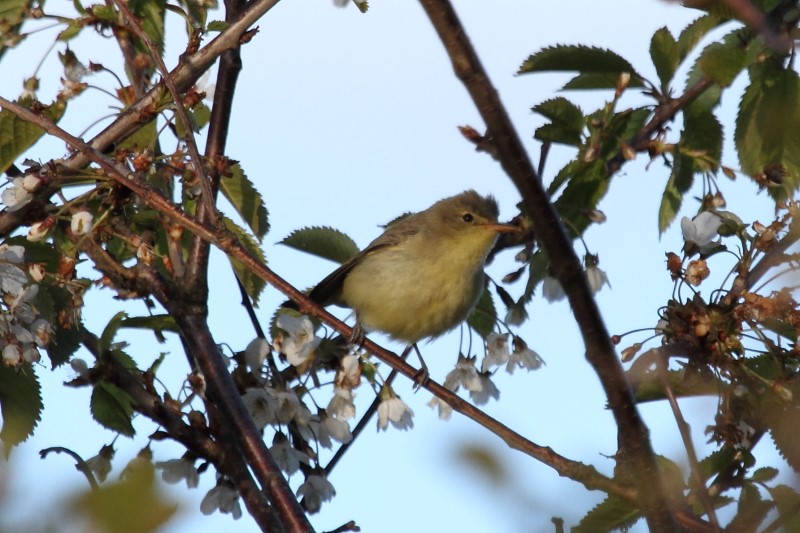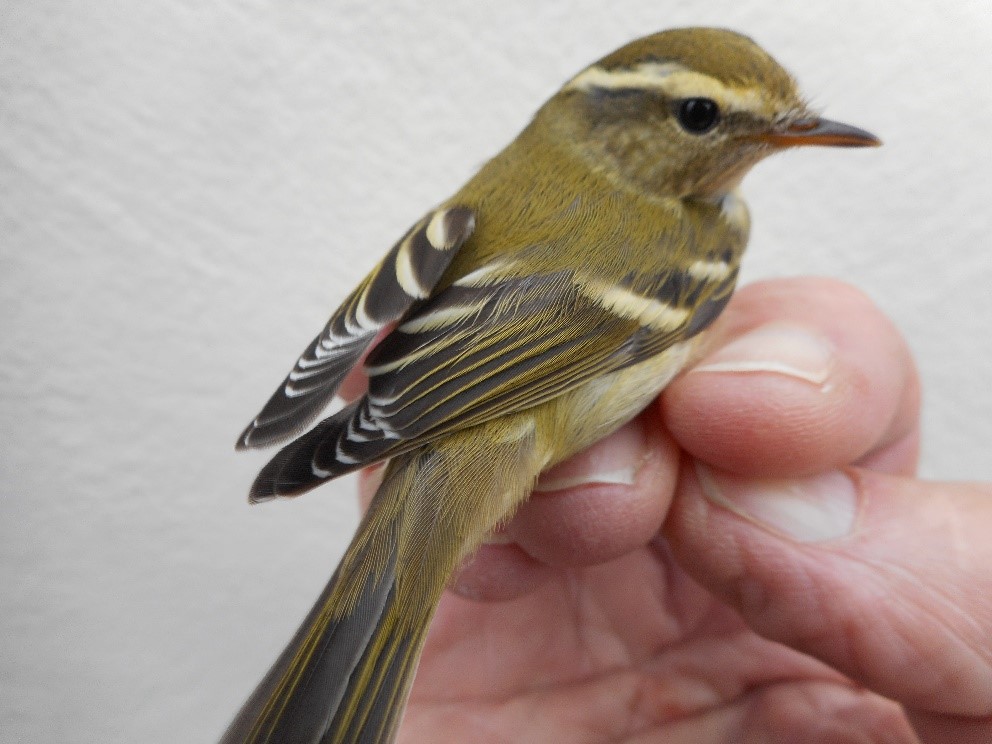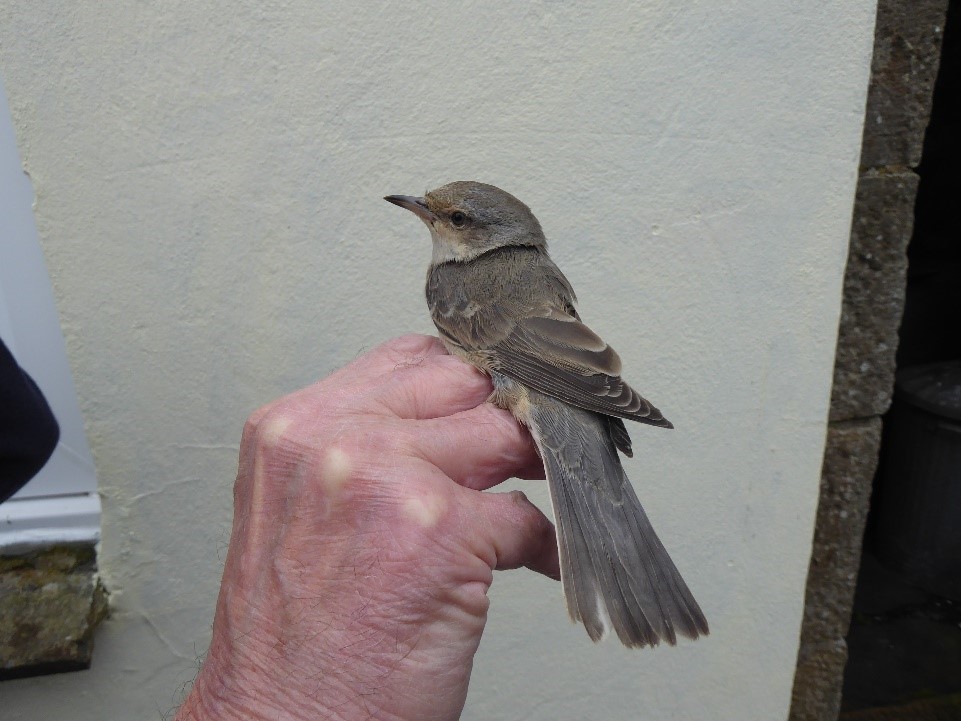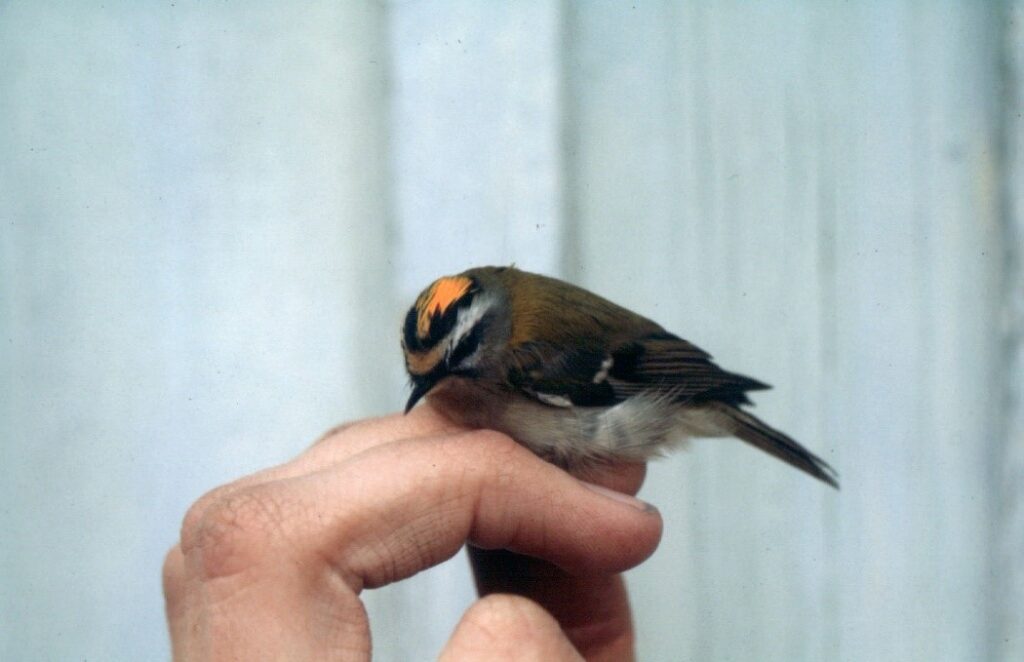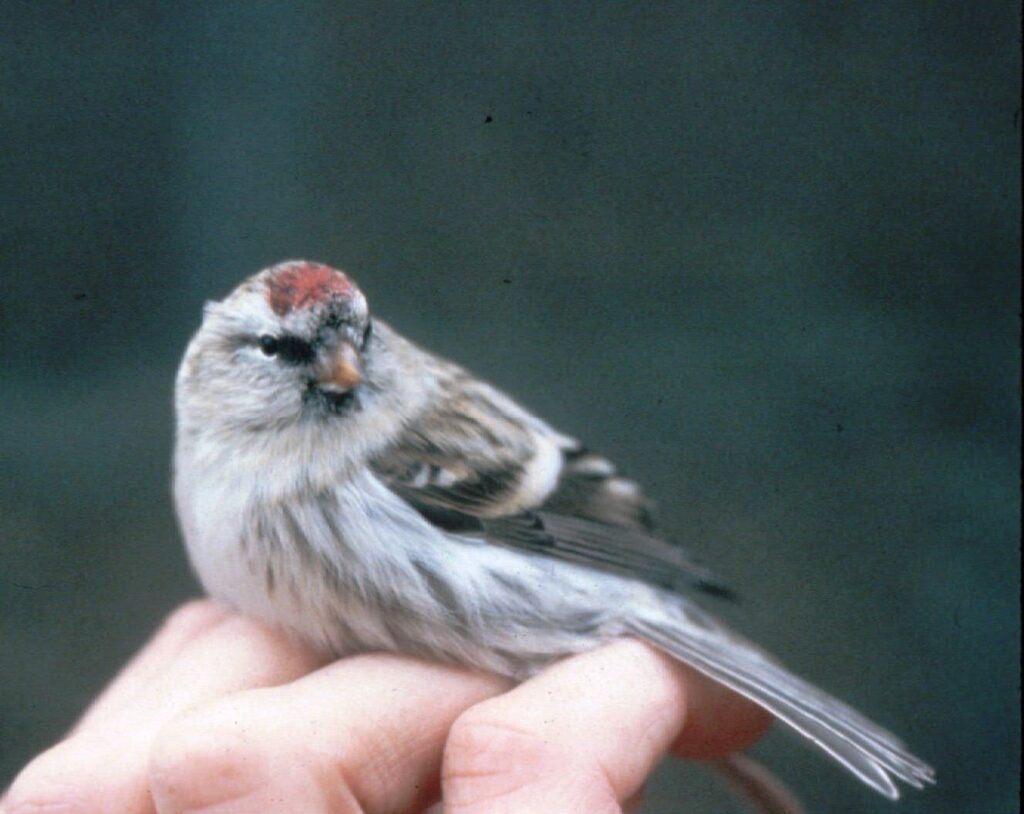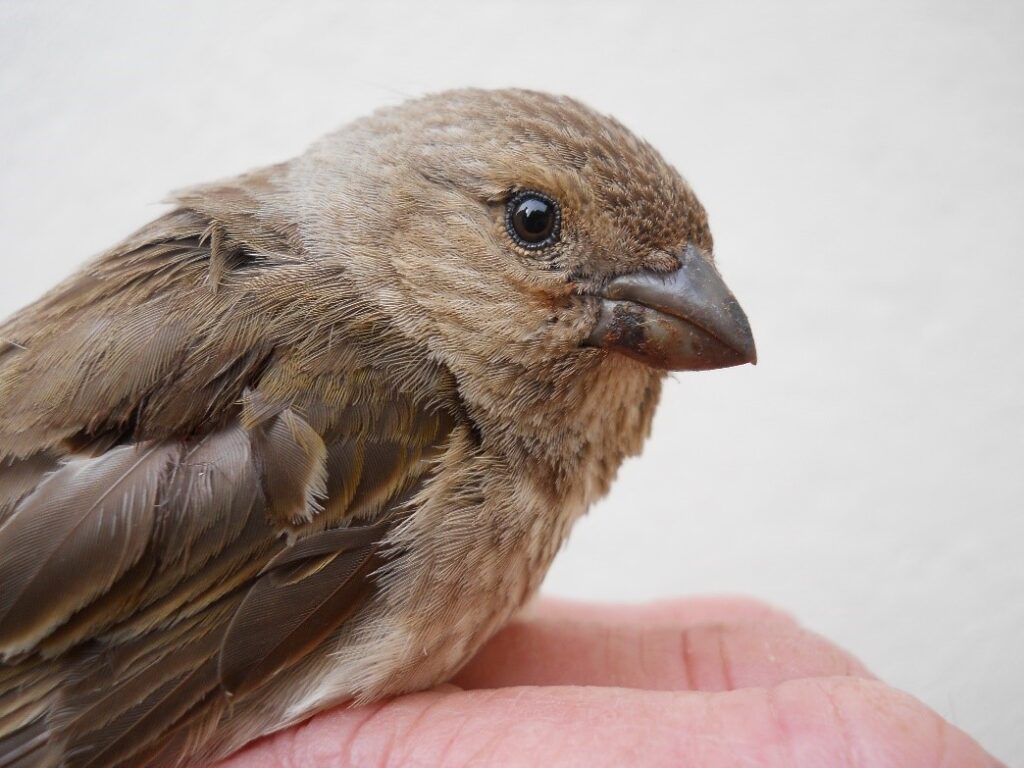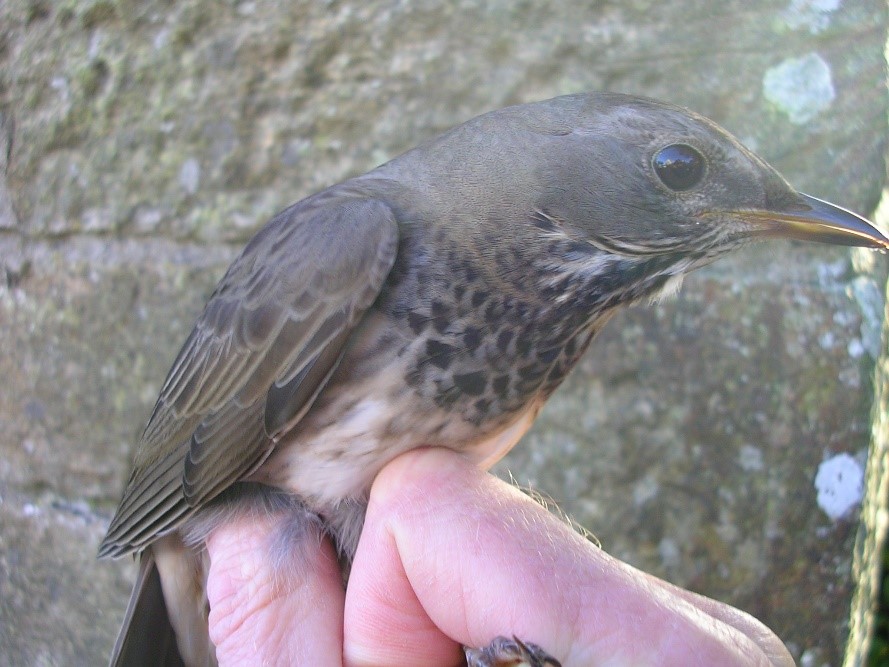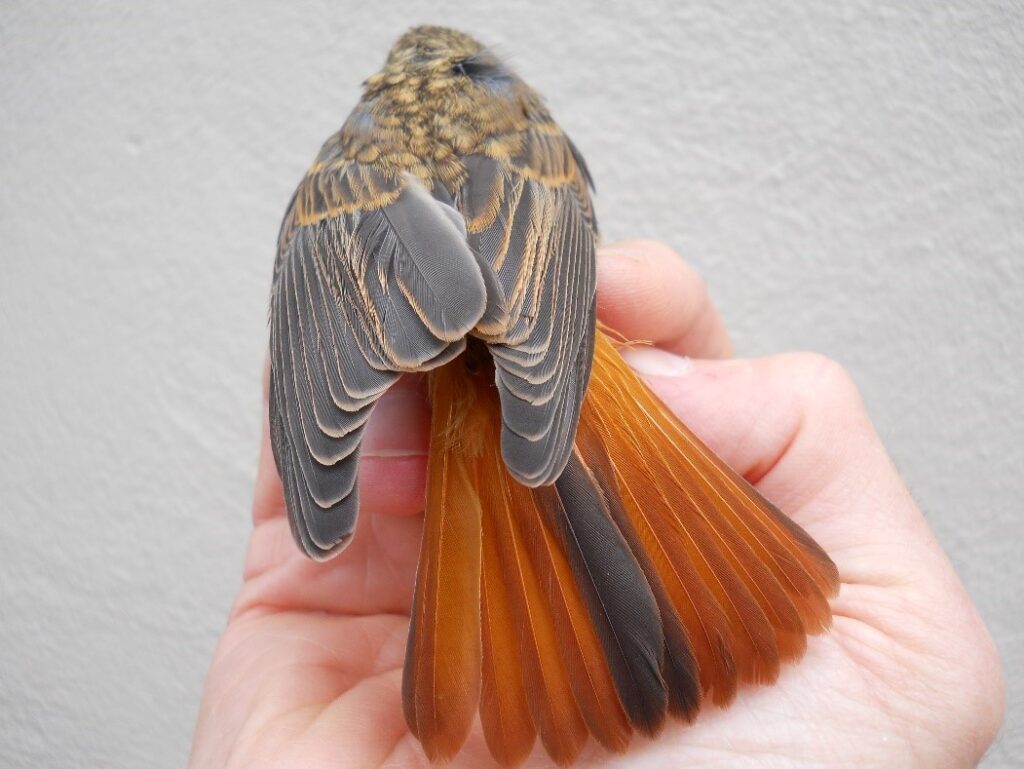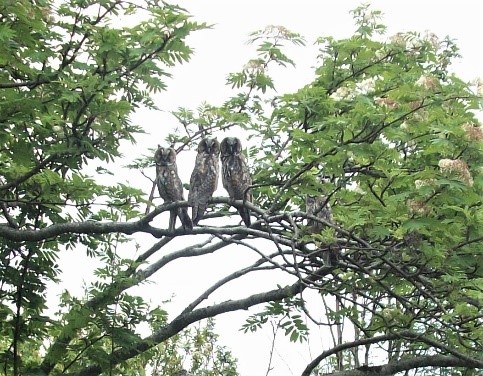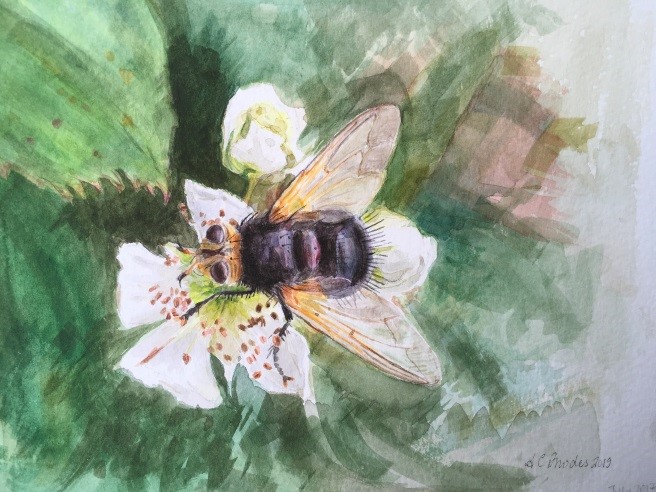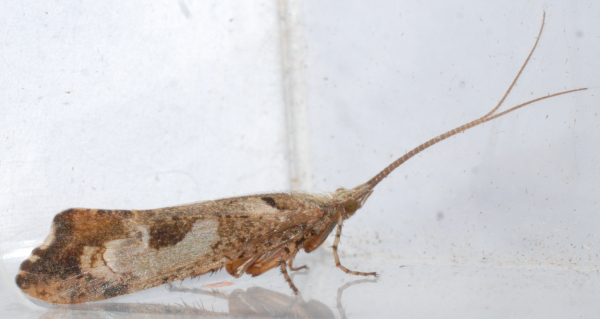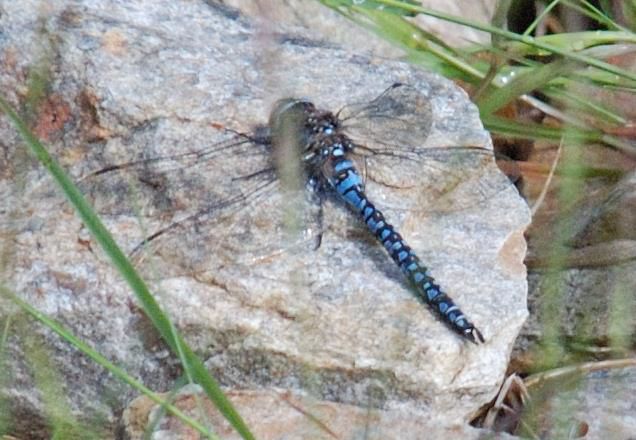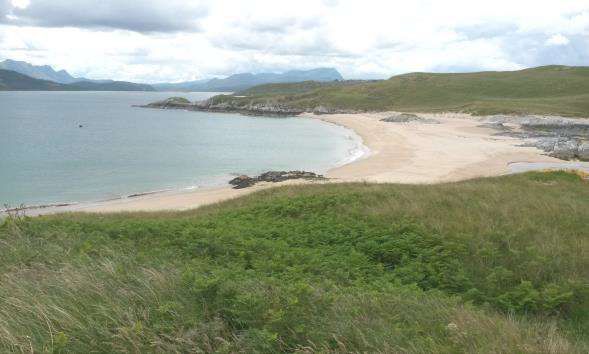By Graham Crittenden
I trained as a ringer in Sussex in the early 1970s and moved to Melvich on the north coast of Sutherland in 1976. There had been some garden ringing carried out on the north coast of Caithness in the 1960s and early 1970s, followed by more regular ringing from the mid-1970s onwards but, as far as I know, ringing in north Sutherland was mainly carried out by visitors and largely confined to raptors and waders. In the late 1970s and through the 1980s raptor nestlings and Storm Petrel ringing were part of my mix, but garden mist-netting between March and mid-November has been my main activity. Since 1976 more than 16000 birds of 70 different species have been ringed in the garden, with several other species seen, which evaded the nets, including Hoopoe, Golden Oriole, Great Grey Shrike, Red-breasted Flycatcher and Grasshopper Warbler.
The garden is situated in an area of rough grazing and moorland about 1km from the coast and 50m above sea level. The house, built in 1875, was one of Sutherland Constabulary’s first police stations. Over the years the walled garden had accumulated a good deal of cover, a tribute to the horticultural prowess of the numerous bobbies who occupied the house between 1875 and 1955. This made mist-netting productive from the off, and over the past 46 years many more trees have been planted and another hectare of land has been added to the garden. I’ve tried to pull together some of the highlights of my garden ringing and comments on the ‘comings and goings’ and ‘gains and losses’ of bird species over this period. I’ve referred to most records in a Sutherland context as many years ago we had a county-based as distinct from a Highland bird recording system.
Passage birds
It is well known that autumn on the north coast can be a very productive period for migrants. Noss Head and the drive of Ackergill Tower in Caithness are migration hot spots well known to Caithness birders long before I came north and my first autumn foray at Noss Head, armed with a couple of 2 metre single panel ditch nets, produced two Red-spotted Bluethroats. Even better, I found a Red-breasted Flycatcher in one of my garden nets in my first autumn at Melvich. Unfortunately, it escaped before I could secure it, but it was a first for Sutherland.
It is difficult to discern many clear trends in the occurrence of autumn passage migrants, except for Blackcap and Yellow-browed Warbler. Blackcaps in Melvich have been almost exclusively autumn passage birds, but over the past decade they have been far more frequent in spring and have bred locally, with my first re-trap of a juvenile bird ringed the previous year occurring in 2021. October 1977 had produced my first control of a Blackcap and I was very surprised to learn that it had been ringed at Dungeness two weeks previously. Both of these observations reflect the changes in the occurrence of Blackcaps in the UK. A Yellow-browed Warbler was trapped in 1978, which was a first for Sutherland. Between 1978 and 2014 another five were ringed, but it has occurred in five of the last seven years, with up to six seen or ringed in a single autumn.
Barred Warbler has been a regular autumn bird, with nine ringed in 46 years, compared with only seven Lesser Whitethroats, the last of which was in 2009. I’ve had only one spring Lesser Whitethroat. Garden Warbler has remained a regular late summer/early autumn bird, but is less numerous now than in the 1980s. Sutherland’s first Icterine Warbler was ringed in September 1980, with another in September 1992 and a spring bird in 2015. Common Whitethroat has never been numerous, but probably bred locally in the 1970s. Only nine birds were ringed up to 1989 and five more in the period up to 2015. Wood Warbler is a scarce bird in the far north and only eight have been ringed in the garden, four in May, two in August, two in October and none since 2004. The seasonal occurrence matches that of North Ronaldsay, as shown in The Birds of Scotland, suggesting that these birds were on passage.
Sutherland’s first Firecrest was ringed in the garden in 1980, with another in 1993 and a third nearby in 1990.
The first and only garden Arctic Redpoll was trapped in September 1984, which was a notable year for the species in Scotland, most of which were on Fair Isle.
Common Rosefinch has been trapped three times, twice in spring and once in autumn.
A Black-throated Thrush was the highlight of 2010 and the third Scottish mainland record (Highland Bird Report 2010).
Although Ring Ouzel still bred within a few miles of the house in the late 1970s, their appearance on passage is very infrequent, with only three in 46 years. Pied Flycatchers were regularly trapped in the autumn, but never more than three in a single year. Since 2000, however, not a single one has appeared in the garden. Redstart shows a similar pattern of occurrence with time.
With regard to migrant birds, nothing is exceptional about Melvich except that a single pair of eyes is allied to some shelter and mist nets. Many birds would have been missed if they had not been trapped, as migrating birds tend to move on quite rapidly if the weather permits. The relatively recent upswing in records from the Durness area shows what is to be seen on the north coast if there are enough eyes on the look-out. I often wonder about the routes taken by passage birds in passing through places like Melvich, which are patches of cover caught between the expanses of sea and the moors. The straths would seem to be prime candidates for funnelling birds north and south but I don’t think there has been much attention given to seeing what travels along them.
Breeding birds
The garden has never been operated as a Constant Effort Site and it is therefore difficult to identify, let alone quantify, trends in breeding bird numbers. Willow Warbler and Sedge Warbler breed in the garden area and, over the years, the population appears to be stable. Whilst Willow Warbler ringing generates low numbers of controls per bird ringed, Sedge Warblers have proven more productive, with Icklesham in Sussex and the Loire-Atlantique region on the west coast of France being sites with which I’ve exchanged birds. Chiffchaff numbers ringed have only reached double figures in a single year (2021), with most birds being recorded on autumn passage and spring birds being relatively uncommon, although they doubtless breed in the area.
Although Spotted Flycatchers have never been numerous, numbers have certainly declined. In 10 of the years since 2003 none were ringed and in some of those years they were not even seen. The only control of a Spotted Flycatcher was in June 2012 and, somewhat surprisingly, it had been ringed on Fair Isle five days before. The Whinchat was a relatively common but rarely ringed bird in the 1970s, but it declined and disappeared from the area in the mid-1980s. Judging by numbers ringed annually and personal observations, Robin, Dunnock, Wren and House Sparrow numbers have remained stable.
Only two Siskins were ringed between 1976 and 1985, with more regular numbers thereafter but, since the mid-2000s, a spring passage has become a regular occurrence, with birds being caught from virtually all regions of the UK. In the last few years, recently fledged birds are being trapped and birds from previous years are being re-trapped. The maturing local conifer forests have probably had a role in this pattern of change. There has also been an increase in Lesser Redpoll numbers since around 2008. The Goldfinch has changed from being somewhat of a rare winter bird in the 1970s and 1980s to an increasingly encountered bird in the 1990s and now a breeding bird, which has been trapped in double figures annually over the past nine years.. These observations are consistent with the increases in numbers of these three finches on the north coast during the breeding season and in winter reported in the Bird Atlas 2007-11, compared to previous Breeding or Winter Atlases. I’ve always hoped that one day I’d control a bird ringed in Sussex by my trainer Reg Lanaway, who is still an active ringer, and the very mobile Goldfinch is probably my best hope. I’ve not achieved it yet, but one of his birds was found dead near Castletown in Caithness in 2022. Chaffinch has always been the commonest finch, followed by Greenfinch, but the latter tends to show more frequent lows in the numbers ringed annually. I had to wait 34 years before the first Hawfinch was trapped in the garden, but there have now been four in the past 12 years. Bullfinches were very scarce birds in the area until around 2003, but since then they have been trapped regularly and the increase in woodland cover may explain this change.
There have been other losses and gains. Grey Partridge was still breeding in Melvich in 1976, but rapidly disappeared. However, in the past few years we’ve gained Jackdaws. Magpies have been seen regularly in ones and twos virtually every year, but their origins are unknown, whilst it took more than 40 years before a Jay was seen. I guess that Sparrowhawks are every garden ringer’s commonest raptor, but I’ve also had Tawny Owl, Long-eared Owl and Merlin in my nets and, remarkably, the last-mentioned individual was controlled by a Caithness ringer 153 days later.
So, what are my garden ringing ambitions? Ringing 10 warbler species in a single year would be good; I think the best I’ve managed is eight in a year. Since 2010 I’ve also started to record some of the other flyers that use my garden airspace and I can thoroughly recommend moth recording when you get to the stage that you need a magnifying glass to reliably read an AA ring number. Whilst my garden bird list is probably around 100, I have a garden list of 350 species of moth, with very many being previously unrecorded so far north.
Images © Graham Crittenden unless otherwise stated.
Note: This article minus photos was first published in the 2021 Highland Bird Report.
References
Balmer, D., Gillings, S., Caffrey, B., Swann, B., Downie, I. & Fuller, R. (eds) 2013. Bird Atlas 2007-11. BTO Books, Thetford.
Forrester, R. W., Andrews, I.J., McInerny, C.J. et al. (eds) 2007. The Birds of Scotland. The Scottish Ornithologists’ Club, Aberlady.
Highland Bird Report 2010. Scottish Ornithologist Club, Highland Branch.


